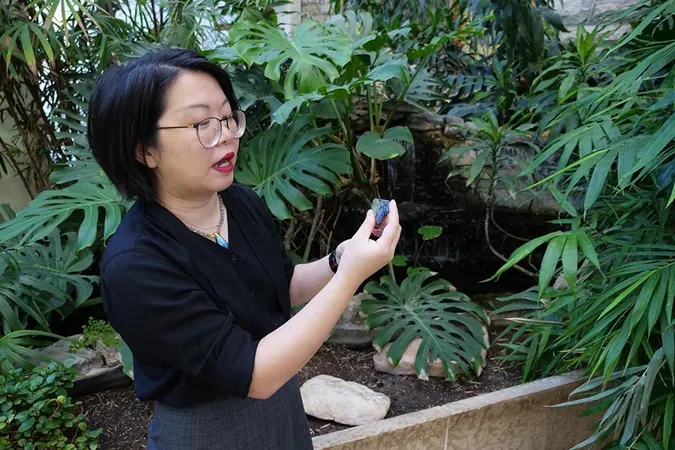
Unlocking Secrets of the Universe: How Laser and Diamond Technology Mimics Meteorite Impacts
2025-07-10
Author: Emma
Exploring the Cosmos from a Saskatchewan Lab
In an intriguing blend of art and science, Dr. Tianqi Xie, an assistant professor at the University of Saskatchewan, proudly showcases a labradorite pendant shaped into a heart. This piece represents not just jewelry, but a passion for research that delves deep into the mysteries of meteorite impacts on rocky planetary bodies.
The Quest for Understanding Impact Craters
Impact craters are a common sight across our solar system, from Earth to the moon and Mars. Dr. Xie’s journey began with her doctoral research on the Mistastin Lake impact structure in Labrador, focusing specifically on feldspar—a mineral found on Earth, the moon, and Mars.
According to Dr. Xie, "Feldspar has a great memory. It holds the historical changes that occurred during impact events. This rock is a time capsule of sorts, documenting the forces of nature that shaped it."
Simulating Cosmic Catastrophes
Currently leveraging cutting-edge synchrotron X-ray and laser technology, Dr. Xie is at the forefront of simulating meteorite impacts in the lab. Her experiments aim to illuminate how these cosmic events affect feldspar and other rocks, providing insights that could reshape our understanding of planetary science.
"Characterizing the pressure and heat generated by impact events is crucial, yet it poses significant challenges," Dr. Xie explains. "Our study sheds light on this aspect, potentially paving the way for future research on temperature's role in impacts."
The Mystery of Diaplectic Glass
One fascinating transformation of feldspar evident in impact craters is the creation of diaplectic glass—a solid form that occurs when feldspar is subjected to extreme heat and pressure without melting. This mysterious mineral form, along with another called maskelynite, has been observed in Martian meteorites, yet the precise conditions for their formation remain an enigma.
Innovation at Argonne National Laboratory
To uncover these mysteries, Dr. Xie employed synchrotron beamlines at Illinois' Argonne National Laboratory. By combining an infrared laser to induce heat, a specialized tiny diamond anvil to generate pressure, and a two-micron synchrotron X-ray to analyze samples, she was able to pinpoint the necessary conditions for creating both diaplectic glass and maskelynite.
"Previous experiments utilized gas guns, which are fast but difficult to analyze in detail," Xie stated. "Our method allows for a more gradual observation of how feldspar evolves under increasing pressure and temperature."
Revealing the History of Our Solar System
Dr. Xie’s groundbreaking research paper recently published in Science Advances, offers precise measurements that outline the different conditions needed for the transformations of feldspar during impact events. Her findings could provide essential clues as to what differentiates Earth from its planetary neighbors. "Studying how feldspar records changes in planetary surfaces can reveal what makes Earth unique and similar to other planets," she emphasizes. "Understanding these processes brings us closer to uncovering why Earth is the way it is and why it supports life."









 Brasil (PT)
Brasil (PT)
 Canada (EN)
Canada (EN)
 Chile (ES)
Chile (ES)
 Česko (CS)
Česko (CS)
 대한민국 (KO)
대한민국 (KO)
 España (ES)
España (ES)
 France (FR)
France (FR)
 Hong Kong (EN)
Hong Kong (EN)
 Italia (IT)
Italia (IT)
 日本 (JA)
日本 (JA)
 Magyarország (HU)
Magyarország (HU)
 Norge (NO)
Norge (NO)
 Polska (PL)
Polska (PL)
 Schweiz (DE)
Schweiz (DE)
 Singapore (EN)
Singapore (EN)
 Sverige (SV)
Sverige (SV)
 Suomi (FI)
Suomi (FI)
 Türkiye (TR)
Türkiye (TR)
 الإمارات العربية المتحدة (AR)
الإمارات العربية المتحدة (AR)